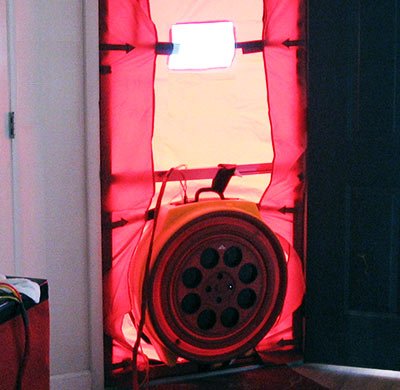Sell faster and smarter with help from energy testing taylors sc
Sell faster and smarter with help from energy testing taylors sc
Blog Article
The Role of Energy Screening in Accomplishing an Airtight Remedy for Your Residential or commercial property
Energy screening is vital for homeowner looking for to create an impermeable environment. It determines air leaks and ineffectiveness that can compromise power performance. Usual wrongdoers include gaps around doors and home windows. Utilizing methods like blower door tests and thermal imaging, home owners can obtain insights into their residential property's vulnerabilities (energy testing south carolina). Understanding these findings is vital. What steps should be taken as soon as air leaks are determined? The solutions hold the key to boosted comfort and financial savings
Recognizing Energy Screening and Its Significance
Power screening plays a necessary role in examining the airtightness of structures and structures. By measuring air leak, this technique offers essential insights right into a residential or commercial property's energy effectiveness, thermal convenience, and total performance. Airtight structures reduce power usage, making certain that heating & cooling systems run successfully. This testing procedure generally entails strategies such as blower door tests, which develop a controlled atmosphere to recognize unplanned air pathways.Understanding the relevance of energy testing extends past compliance with building regulations; it cultivates a proactive method to sustainability. Recognizing air leakages early can lead to prompt remediation, inevitably boosting indoor air top quality and decreasing utility prices. Additionally, power testing adds to the longevity of building products by lessening moisture build-up and relevant damage. As awareness of environmental influence boosts, power screening becomes an essential tool for house owners and home builders aiming for high-performance buildings.
Usual Sources of Air Leaks in Properties
Recognizing usual sources of air leakages is essential for enhancing a building's power performance. These leaks often take place in numerous areas of a building, significantly impacting heating & cooling prices. Usual culprits include voids around doors and windows, where seals may degrade with time. In addition, electric outlets and buttons can develop pathways for air exchange otherwise correctly insulated. Attic rooms and basements are additionally regular sources, specifically where walls satisfy the foundation or the roof covering. Other potential leak points consist of pipes infiltrations, venting systems, and the areas surrounding chimneys. Older buildings might suffer from broken down building products, raising susceptability to air seepage. By recognizing these common resources, homeowner can take proactive actions to secure leakages, therefore boosting general power performance and convenience within their rooms. Addressing these concerns is an important part of establishing a closed option for any type of residential or commercial property.
Methods of Energy Screening: Blower Door and Thermal Imaging
Effective energy screening approaches, such as blower door tests and thermal imaging, play an essential function in detecting air leaks within a residential or commercial property. The blower door test entails pressurizing or depressurizing a building to gauge airflow and identify leakages. An adjusted follower is installed in an exterior doorway, and the resulting pressure distinction highlights locations of unwanted air seepage. This method measures the overall airtightness of the structure.Thermal imaging enhances blower door examinations by visually spotting temperature level variations on surfaces, disclosing hidden air leakages. Infrared electronic cameras record heat loss or gain, permitting specific recognition of issue locations, such as improperly shielded walls or spaces around home windows and doors. energy testing taylors sc. Together, these approaches offer a thorough evaluation of a building's energy effectiveness, enabling homeowner to address air leakages successfully and improve total performance
Benefits of Identifying Air Leaks
Identifying air leakages provides substantial advantages for power effectiveness and indoor convenience. By sealing these leaks, structures can minimize power usage, bring about reduced energy costs and a minimized carbon impact. Furthermore, improved airtightness adds to a more steady interior atmosphere, boosting overall comfort for owners.
Energy Performance Improvements
Identifying air leaks is vital for boosting power efficiency in buildings. Recognizing these leakages permits homeowner to deal with areas where conditioned air gets away or unconditioned air goes into, bring about significant energy cost savings. By sealing fractures and voids, structures can maintain a consistent temperature, minimizing the need on home heating and cooling down systems. This not just lowers energy bills however likewise lessens the environmental effect connected with boosted power intake. Additionally, energy efficiency improvements add to a building's overall sustainability, making it a more attractive option for eco-conscious purchasers or renters. Eventually, prioritizing air leak detection and removal aids More about the author maximize power use, advertises responsible source monitoring, and sustains long-term monetary advantages for residential or commercial property owners.

Enhanced Indoor Comfort
Addressing air leaks not only brings about power cost savings yet also significantly improves interior convenience. When air leaks are efficiently determined and secured, temperature level regulation within a building becomes much more effective. This leads to consistent indoor temperatures, getting rid of chilly drafts in wintertime and locations in summertime. Improved insulation likewise minimizes environmental pollution from outdoors, developing a quieter and even more calm living setting. In addition, improved air quality is attained by reducing the infiltration of outdoor contaminants, allergens, and humidity, contributing to the overall well-being of occupants. Property owners experience a more pleasant environment, fostering leisure and efficiency. Eventually, recognizing and fixing air leaks is essential for attaining suitable indoor comfort throughout the year.
Just How Energy Screening Enhances Comfort and Indoor Air Top Quality
Energy screening plays a crucial duty in improving temperature law within interior spaces, guaranteeing a consistent and comfy atmosphere. By sealing and recognizing air leaks, it additionally greatly lowers the infiltration of pollutants, therefore enhancing indoor air top quality. This double influence promotes overall wellness for residents.
Boosted Temperature Regulation
Reliable temperature level guideline substantially adds to both comfort and indoor air top quality, making it a crucial emphasis for contemporary building design. Energy testing plays a vital function in attaining this guideline by identifying areas where warm loss or gain happens, permitting targeted improvements. By making sure an impermeable building envelope, energy testing assists preserve regular interior temperatures, decreasing the need for too much heating or air conditioning. This security enhances resident convenience, as variations in temperature level can lead to discomfort and discontentment. Furthermore, reliable temperature level control can boost interior air top quality by reducing the risk of condensation and mold growth, which thrive in uneven temperature conditions. Energy testing is necessary for optimizing temperature level administration in domestic and industrial buildings. Business Minimized Contaminant Seepage
While numerous elements add to interior air top quality, minimized contaminant seepage sticks out as a crucial facet that power testing can considerably enhance. Power testing identifies air leaks and powerlessness in a building's envelope, which might enable outdoor toxins, allergens, and moisture to go into indoor rooms. By sealing these leakages, buildings can successfully restrict airborne pollutants, leading to a much healthier atmosphere. Boosted airtightness not only boosts comfort but likewise minimizes the problem on heating and cooling down systems, resulting in power cost savings. In addition, decreased toxin infiltration cultivates better general health for passengers, as cleaner air advertises breathing wellness and reduces allergic reaction signs. Energy testing plays a crucial role in producing both a health-conscious and energy-efficient living space.
The Financial Impact of Energy Screening on Utility Costs

Actions to Take After Power Testing Results
When power screening results remain in, property owners need to thoroughly review the findings to establish the most effective course onward. The primary step entails recognizing the locations that need enhancement, such as air leakages or insulation deficiencies. Property owners ought to then prioritize repairs based on the severity of the problems and their possible effect on power efficiency.Next, it is suggested to speak with experts that focus on energy efficiency to devise a complete activity plan. This may consist of options like sealing gaps, adding insulation, or updating home windows and doors.After carrying out the needed modifications, a follow-up energy examination can figure out the efficiency of the repair work. Continuous surveillance is likewise necessary to ensure that the property keeps its closed condition over time. By adhering to these actions, home owners can substantially improve their home's energy performance, causing reduced energy bills and boosted comfort.
Frequently Asked Inquiries
Just how Usually Should I Conduct Energy Testing on My Property?
The regularity of power screening must normally be every few years, or following substantial remodellings. Regular analyses assist identify performance improvements and assure that the residential property maintains optimal power efficiency over time, adapting to transforming problems.
Is Energy Testing Necessary for New Constructions?
Power screening is vital for brand-new building and constructions, as it determines prospective air leak and insulation concerns - energy testing. Executing these examinations warranties energy efficiency, improves indoor convenience, and fulfills building regulations, ultimately causing lasting price savings
Can I Carry Out Power Screening Myself?
Power screening generally needs specialized tools and experience. While some house owners might attempt fundamental analyses, professional services assure accurate outcomes and reliable recognition of concerns, inevitably bring about far better power performance and convenience in living areas.
What Is the Expense of Expert Power Screening Providers?
The expense of expert energy testing solutions typically varies from $300 to $1,500, relying on home complexity, location, and size. Homeowners need to consider prospective energy financial savings when reviewing the financial investment in these services.
How Much Time Do Energy Screening Results Commonly Last?
Energy screening results normally remain legitimate for one to three years, relying on factors like building alterations and environmental changes. Routine updates are suggested to assure accuracy and preserve reliable energy performance standards. Efficient power screening techniques, such as blower door examinations and thermal imaging, play a vital duty in diagnosing air leaks within a residential or commercial property. Recognizing these leakages allows building proprietors to deal with areas where conditioned air runs away or unconditioned air enters, leading to significant energy cost savings. Power screening recognizes air leaks and weak points in a building's envelope, which may enable outside toxins, irritants, and moisture to go into interior rooms. As house owners increasingly seek to lower their power expenditures, the duty of power testing becomes important in determining ineffectiveness and leakages. House owners need to then focus on fixings based on the severity of the problems and their prospective effect on energy efficiency.Next, it is recommended to consult with experts who specialize in energy performance to design an extensive action plan.
Report this page